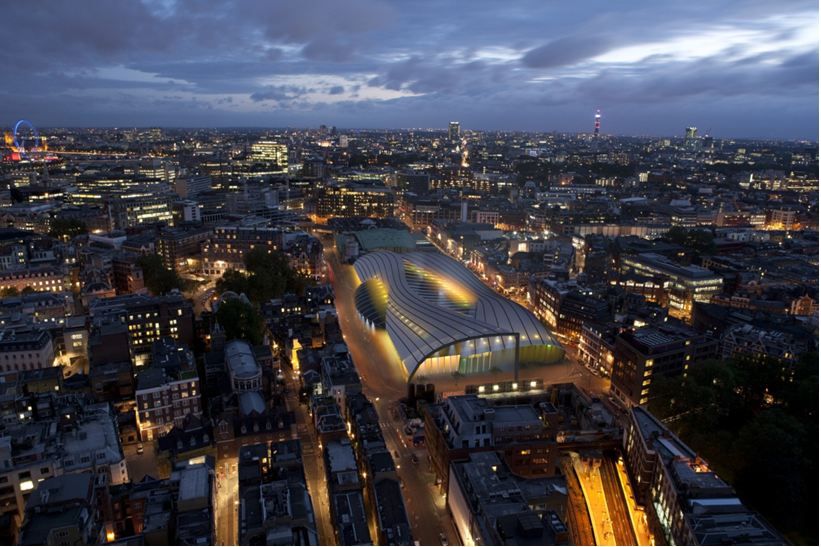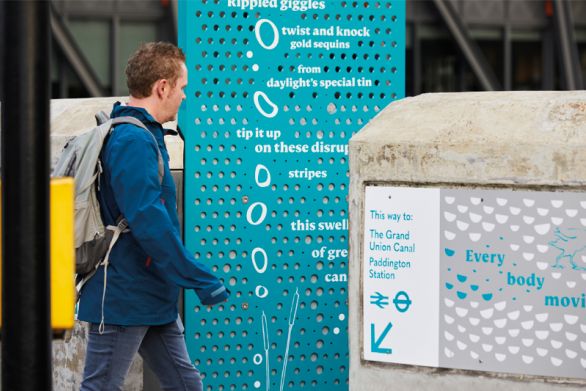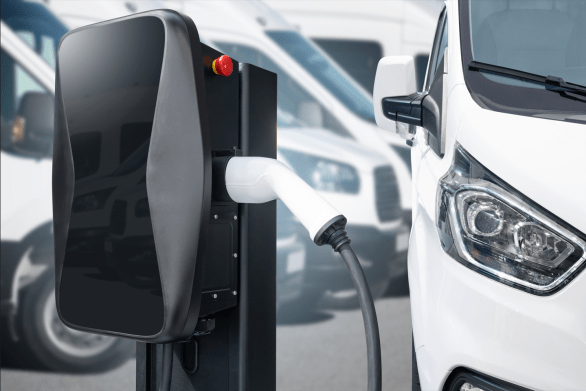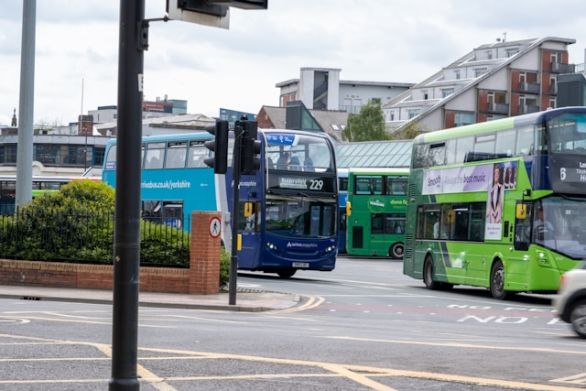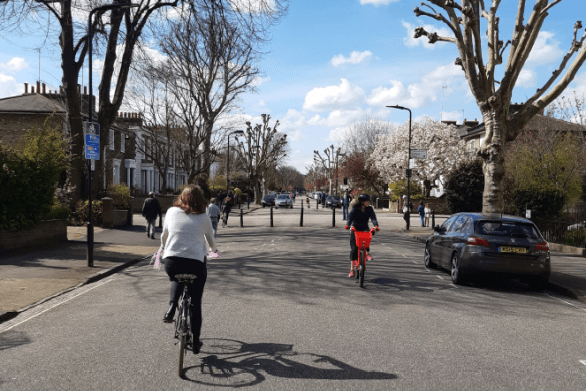The Universal Hub: a case study in smart planning
Here's a possible new solution to the challenge surrounding the future of London’s airports.
This challenge will be examined by an independent review led by Sir Howard Davies. So far, ideas have been generated for new airports of varying sizes – both in the Thames estuary and elsewhere. Alternatively, there are advocates for expansion of London’s existing airports and also those in other parts of the country.
These will need to be examined carefully. But we believe that the Commission needs to consider objectives very carefully and examine them from specific perspectives. Taking this as a starting paradigm, it is possible to think positively about the needs of key groups such as air passengers and residents under airport noise foot-prints from the outset, rather than regarding them as ‘impact groups’ to be addressed in an appraisal matrix. This is how the Universal Hub was devised. We call it smart planning.
Being realistic does not mean accepting things are bound to get worse
Much can be learned from experience elsewhere. But we also need to introduce design flair and thoughtful innovation. Just improving the passenger experience or the noise profile around airports incrementally, we believe, is not enough. Now is the time to try to create a much better solution.
Of course, there is a need for realism. Funding is going to be factor if the preferred answer is a new hub airport – as Oxera’s Report for the Transport Select Committee of January 2013 makes clear. But so too is the availability – or rather the lack of – capacity on South East England’s transport network. Just keeping today’s London’s airport free of congestion on the crucial surface transport links that serve them is itself going to require significant investment. Understanding this point opens the door to a radical new solution. The issue for the Davies Commission is not so much where to site additional runway capacity, but how to make air travel accessible and acceptable.
What would make people sit up and say yes?
There are three crucial perspectives, those of:
- air travellers
- the residential communities living around each airport
- the airline industry.
Rather than worrying first about a sensible ‘end-state’, in the classic strategic planning style, we started by thinking about transitional stages.
Air travellers want fast and dependable access. The world over, this is increasingly delivered by dedicated rail links. In South East England, there really is no alternative for any aspiring international hub.
Airport success depends on great surface connectivity
Today’s South East’s airport rail links are all compromised by the need to accommodate commuters as well as airport passengers on congested rail networks. The outlook is bleak. Heathrow Express will eventually get absorbed into Crossrail, and it will no longer be a non-stop 15 minute connection. Direct access to the City and Canary Wharf is all very fine, but travellers to/from the West End (where the hotels and most of the air passengers are headed) will find their journey times extended – almost doubled. Gatwick Express services might be made separate from commuter services once again, but the Brighton Main Line over which they run is one of Network Rail’s key problem areas: ‘capped out’ like the Great Western that supports Heathrow Express.
Before any new airport could come on-stream, we need to consider how to protect existing standards of connectivity though our major airports. Heathrow needs a new dedicated central London connection, for a start. But the case for providing it is inevitably linked to the question of expanding Heathrow itself.
Heathrow and the alternatives in the medium term
Expansion at Heathrow would be the air travellers’ choice (as revealed in airport throughput rankings); it is well-known to be the air industry’s preference too. And while local communities don’t want it expanded through a third runway, most want to avoid Heathrow being closed. This could damage the local economy and employment prospects. But without expansion, the investment needed to maintain Heathrow’s current connectivity advantage, will be hard to justify, both in business case and political terms.
The major local objection to a third runway is noise. But what if a third runway is made absolutely conditional on a retrenchment from the current allowances on night-time airspace use? Suppose Heathrow becomes a higher capacity, but daytime-only airport?
Then, night-time flights would have to use Stansted and Gatwick – or a new Estuary Airport – airports where the numbers affected by aircraft noise are much lower. Residents around Heathrow would get a guaranteed night’s sleep – which they don’t have today, with no flights between 11pm and 6am, exactly what HACAN (the Heathrow action group on noise) has asked for. Given the alternative – an unexpanded airport that has worsening absolute and relative connectivity (which signals a declining airport and a declining local economy), a daytime 3-runway answer would have a lot of appeal in West London.
Yes, the airline industry would argue it faces extra costs, what with possibly having to run daytime flights from one airport and night-time flights from another. But they would have a choice, and some might prefer to switch from Heathrow because of the 24h opportunity elsewhere.
The Universal Hub
So back to air passengers: how would they deal with airport facilities that might be thought confusing, with a dispersed geography, and subject to differing time of day restrictions? This is where some smart thinking is needed.
Air passengers may not mind the choice-of-airport question if they have a common central London terminal, connected by fast dedicated links to each of the airports. They go to the same place regardless, and get a dedicated fast transit to their flight. A universal hub: not an airport with runways, but an air passenger terminus in the centre of London.
This is not to suggest that ‘hopping across’ London using pairs of fast transits offers an alternative to traditional on-airport flight to flight transfers. This will still need to be offered in one place: at an expanded Heathrow (during the daytime), or elsewhere (24 hours).
A candidate site for the Universal Hub would be at Farringdon, where a two track east-west railway would serve a 4 platform-face station built under Smithfield Market. New fast links, tunnelled without costly and confusing intermediate stations would serve Heathrow in (say) 15 minutes, and Stansted and/or Estuary in 25 minutes. Gatwick would need to be reachable over an upgraded Brighton Main Line, from the existing Thameslink station in (say) 30 minutes; even Luton could be connected (it’s only 37 minutes by Thameslink today).
Universal Hub at Smithfield. Source: Steer Davies Gleave Studio
Airport Express Network Plan. Source: Steer Davies Gleave Studio
Delivering for the key user groups
So what’s not to like? A reduction in noise for those currently affected by Heathrow at times when it’s most needed; a progressive and flexible expansion of runway capacity; realistic choices for airlines; just one place to start/finish the journey for air passengers. And it happens to be one place on London with back up high quality rail system: Crossrail and Thameslink between them serve all points of the compass. Back up is good: it means resilience and traveller reassurance.
Smart planning requires an open mind-set. Rather than thinking about a location and then what scale of airport might fit in and then about how to get passenger access – we started with what different groups of people really need and want. The smart solution is very flexible and can build on all kinds of runway capacity expansion programmes but a decision has to be taken on whether it is right to keep and nurture each of Heathrow, Gatwick and Stansted at the outset.
Our view is that it makes little sense to plan on the closure of any one of these airports. The transition costs and risks are simply too great.
Commitment to a Universal Hub as described here is the way forward.
For more information, contact
Fred Beltrandi
t +44 20 7910 5000
e fred.beltrandi@sdgworld.net
